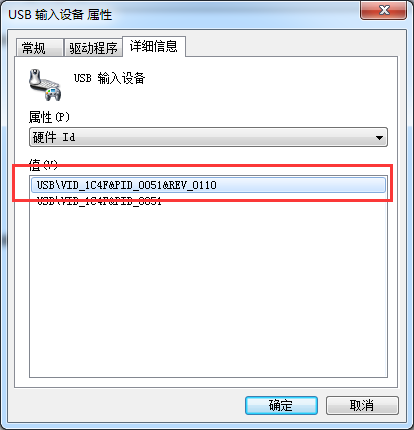usb之python(pyusb)
电脑系统为WIN7 64位
python:为python3.6 32位
需要插件PyUSB-1.0.0.tar,pywinusb-0.4.2。
按照的步骤我偷懒了,自己百度一下。
我们先看设备管理的

测试代码如下
#!/usr/bin/python
# -*- coding:utf-8 -*- import usb.util
import sys
#USB\VID_1C4F&PID_0051
dev = usb.core.find(idVendor= 0x1C4F, idProduct= 0x0051)
if dev is None:
raise ValueError('Device not found')
print(dev)
# set the active configuration. With no arguments, the first
# configuration will be the active one cfg = dev.get_active_configuration()
测试结果
Python 3.6.0 (v3.6.0:41df79263a11, Dec 23 2016, 07:18:10) [MSC v.1900 32 bit (Intel)] on win32
Type "copyright", "credits" or "license()" for more information.
>>>
================== RESTART: C:\Users\libra\Desktop\2222.py ==================
DEVICE ID 1c4f:0051 on Bus 003 Address 002 =================
bLength : 0x12 (18 bytes)
bDescriptorType : 0x1 Device
bcdUSB : 0x110 USB 1.1
bDeviceClass : 0x0 Specified at interface
bDeviceSubClass : 0x0
bDeviceProtocol : 0x0
bMaxPacketSize0 : 0x8 (8 bytes)
idVendor : 0x1c4f
idProduct : 0x0051
bcdDevice : 0x110 Device 1.1
iManufacturer : 0x1
iProduct : 0x2
iSerialNumber : 0x0
bNumConfigurations : 0x1
CONFIGURATION 1: 100 mA ==================================
bLength : 0x9 (9 bytes)
bDescriptorType : 0x2 Configuration
wTotalLength : 0x22 (34 bytes)
bNumInterfaces : 0x1
bConfigurationValue : 0x1
iConfiguration : 0x0
bmAttributes : 0xa0 Bus Powered, Remote Wakeup
bMaxPower : 0x32 (100 mA)
INTERFACE 0: Human Interface Device ====================
bLength : 0x9 (9 bytes)
bDescriptorType : 0x4 Interface
bInterfaceNumber : 0x0
bAlternateSetting : 0x0
bNumEndpoints : 0x1
bInterfaceClass : 0x3 Human Interface Device
bInterfaceSubClass : 0x1
bInterfaceProtocol : 0x2
iInterface : 0x0
ENDPOINT 0x81: Interrupt IN ==========================
bLength : 0x7 (7 bytes)
bDescriptorType : 0x5 Endpoint
bEndpointAddress : 0x81 IN
bmAttributes : 0x3 Interrupt
wMaxPacketSize : 0x4 (4 bytes)
bInterval : 0xa
如果先出现系统无法识别的话
可以参考
https://stackoverflow.com/questions/33972145/pyusb-on-windows-8-1-no-backend-available-how-to-install-libusb
| I downloaded latest libusb windows binaries from here: http://sourceforge.net/projects/libusb/files/libusb-1.0/libusb-1.0.20/libusb-1.0.20.7z/download then I copied libusb1.dll according to this: when you are on 64-bit Windows, MS64\dll\libusb-1.0.dll must be copied into C:\Windows\System32 and (for running 32-bit applications that use libusb) MS32\dll\libusb-1.0.dll must be copied into C:\Windows\SysWOW64. and then I copied libusb1.lib from binaries to lib dir in python directory and now pyusb works for me. hope it helps. |
继续
#!/usr/bin/python
# -*- coding:utf-8 -*- import usb.core
import usb.util
import sys #USB\VID_1C4F&PID_0051
dev = usb.core.find(idVendor= 0x1C4F, idProduct= 0x0051)
if dev is None:
raise ValueError('Device not found')
print(dev)
# set the active configuration. With no arguments, the first
# configuration will be the active one cfg = dev.get_active_configuration()
print("#"*60)
print(cfg)
================= RESTART: C:/Users/libra/Desktop/3333333.py =================
DEVICE ID 1c4f:0051 on Bus 003 Address 002 =================
bLength : 0x12 (18 bytes)
bDescriptorType : 0x1 Device
bcdUSB : 0x110 USB 1.1
bDeviceClass : 0x0 Specified at interface
bDeviceSubClass : 0x0
bDeviceProtocol : 0x0
bMaxPacketSize0 : 0x8 (8 bytes)
idVendor : 0x1c4f
idProduct : 0x0051
bcdDevice : 0x110 Device 1.1
iManufacturer : 0x1
iProduct : 0x2
iSerialNumber : 0x0
bNumConfigurations : 0x1
CONFIGURATION 1: 100 mA ==================================
bLength : 0x9 (9 bytes)
bDescriptorType : 0x2 Configuration
wTotalLength : 0x22 (34 bytes)
bNumInterfaces : 0x1
bConfigurationValue : 0x1
iConfiguration : 0x0
bmAttributes : 0xa0 Bus Powered, Remote Wakeup
bMaxPower : 0x32 (100 mA)
INTERFACE 0: Human Interface Device ====================
bLength : 0x9 (9 bytes)
bDescriptorType : 0x4 Interface
bInterfaceNumber : 0x0
bAlternateSetting : 0x0
bNumEndpoints : 0x1
bInterfaceClass : 0x3 Human Interface Device
bInterfaceSubClass : 0x1
bInterfaceProtocol : 0x2
iInterface : 0x0
ENDPOINT 0x81: Interrupt IN ==========================
bLength : 0x7 (7 bytes)
bDescriptorType : 0x5 Endpoint
bEndpointAddress : 0x81 IN
bmAttributes : 0x3 Interrupt
wMaxPacketSize : 0x4 (4 bytes)
bInterval : 0xa
############################################################
CONFIGURATION 1: 100 mA ==================================
bLength : 0x9 (9 bytes)
bDescriptorType : 0x2 Configuration
wTotalLength : 0x22 (34 bytes)
bNumInterfaces : 0x1
bConfigurationValue : 0x1
iConfiguration : 0x0
bmAttributes : 0xa0 Bus Powered, Remote Wakeup
bMaxPower : 0x32 (100 mA)
INTERFACE 0: Human Interface Device ====================
bLength : 0x9 (9 bytes)
bDescriptorType : 0x4 Interface
bInterfaceNumber : 0x0
bAlternateSetting : 0x0
bNumEndpoints : 0x1
bInterfaceClass : 0x3 Human Interface Device
bInterfaceSubClass : 0x1
bInterfaceProtocol : 0x2
iInterface : 0x0
ENDPOINT 0x81: Interrupt IN ==========================
bLength : 0x7 (7 bytes)
bDescriptorType : 0x5 Endpoint
bEndpointAddress : 0x81 IN
bmAttributes : 0x3 Interrupt
wMaxPacketSize : 0x4 (4 bytes)
bInterval : 0xa
usb之python(pyusb)的更多相关文章
- [开发笔记usbTOcan]PyUSB访问设备
前面的几个章节的介绍,基本把usbTOcan的底层代码设计好,现在需要介绍PC端的PyUSB进行简单的测试. 在文章开始之前,需要简单的介绍一下整个系统. 0 | 部署 这里使用了两块TM4C123G ...
- 学习日志 - Openwrt安装python然后wallproxy
前提: - 先要把U盘插入路由器的usb口,大多数情况Openwrt都会自动挂载的吧,尽量找当前年或前一年的固件.ssh进路由器,可以看到/mnt/sda1 - 让路由器联网,因为需要从网络上下载安 ...
- OPENWRT安装Python到U盘
http://www.zcilxl.com/tech/23.html 研究了一下如何将软件安装在OPENWRT挂载的U盘上,以Python为例,把过程记录一下. 安装的前提是你的USB设备已经成功挂载 ...
- 极路由4pro(HC5962)安装python
基本配置 其实极路由4.极路由4 pro.极路由B70都是一个型号的(HC5962) CPU:MT7621AT + MT7612EN + 7603EN 内存:256MB DDR3 RAM 闪存:128 ...
- Openwrt路由器上安装python
在路由器安装python之前,还是经过了一番折腾的.淘宝上买了个已经刷好系统的小米迷你路由器,但里面安装的不是预期的Pandorbox,而是LEDE. 这个固件已经带了大量自带的软件,128的内存实在 ...
- Python+Appium实现自动抢微信红包
前言 过年的时候总是少不了红包,不知从何时开始微信红包横空出世,对于网速和手速慢的人只能在一旁观望,做为python的学习者就是要运用编程解决生活和工作上的事情. 于是我用python解决我们的手速问 ...
- Openwrt 安装软件到U盘或硬盘
http://blog.licess.org/openwrt-install-software-to-udisk-harddisk/ 运行一个多月的DDNAS被结婚来玩的小孩给关了,于是趁机更新了一下 ...
- python 之serial、pyusb 使用开发
说明:本次是在windows 系统操作实现的. serial 使用场景,获取得力扫码枪的扫码数据,该扫码枪支持三种通讯接口设置,如下图 即插即用的是 USB-KBW功能,插上去即可获取扫码数据,第二种 ...
- windodws pyusb hub端口对应连接的usb设备
源码: 1 #!/usr/bin/python 2 import sys 3 import usb.core 4 # find USB devices 5 dev = usb.core.find(fi ...
随机推荐
- Hard commits, soft commits and transaction logs
“Hard commits are about durability, soft commits are about visibility“ Transaction Logs 首先介绍下solrcl ...
- 透过CAT,来看分布式实时监控系统的设计与实现
2011年底,我加入大众点评网,出于很偶然的机会,决定开发CAT,为各个业务线打造分布式实时监控系统,CAT的核心概念源自eBay闭源系统CAL----eBay的几大法宝之一. 在当今互联网时代,业务 ...
- C# int.ToString()
C# int.ToString() 格式化数值:有时,我们可能需要将数值以一定的格式来呈现,就需要对数值进行格式化.我们使用格式字符串指定格式.格式字符串采用以下形式:Axx,其中 A 为格式说明符, ...
- 廖雪峰Java2面向对象编程-5包和classpath-3作用域
1.访问权限 Java的类.接口.字段和方法都可以设置访问权限 访问权限是指在一个类的内部,能否引用另一个类以及访问它的字段和方法 访问权限有public.protected.private和pack ...
- xgboost的sklearn接口和原生接口参数详细说明及调参指点
from xgboost import XGBClassifier XGBClassifier(max_depth=3,learning_rate=0.1,n_estimators=100,silen ...
- Java集合类分析,初始化
Java集合是常用的数据类型,在此详细分析接口和实现类.整个集合框架就围绕一组标准接口而设计,学习集合框架有助开发实践. 框架体系图 1.Collection 接口Collection 是最基本的集合 ...
- POJ3159 Candies
#include <iostream> #include <queue> #include <cstring> #define maxn 30005 #define ...
- Linux常用指令之二
1.用户权限 1).查看文件属性 ls -l file(ll别名) drwxr-x--- 2 root root 4096 Jan 20 19:39 mnt # ...
- boost 学习笔记 2: timer
boost 学习笔记 2: timer copy from:http://einverne.github.io/post/2015/12/boost-learning-note-2.html 1:ti ...
- 《Linux 性能及调优指南》1.4 硬盘I/O子系统
翻译:飞哥 (http://hi.baidu.com/imlidapeng) 版权所有,尊重他人劳动成果,转载时请注明作者和原始出处及本声明. 原文名称:<Linux Performance a ...
